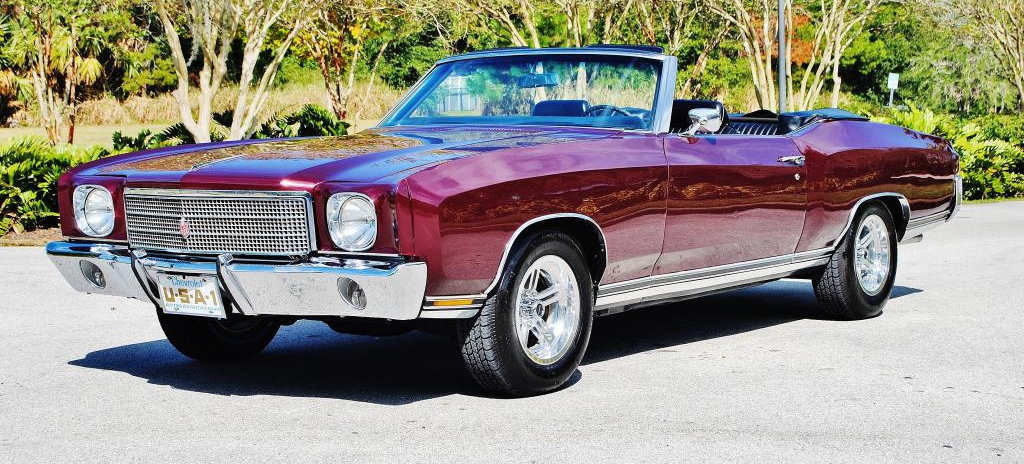1970 Monte Carlo

You may be wondering what the Monte Carlo is doing on a Chevelle website. Many Chevelle owners do not consider the Monte Carlo a Chevelle and most Monte Carlo owners don't consider their Monte Carlos as Chevelles either. No matter how one breaks down the VIN, 138xx is a Chevelle VIN; the Monte Carlo body style designation of 57 doesn't rule out it being a Chevelle anymore than the El Camino's body style designation of 80 rules it out of being a Chevelle.
The Monte Carlo was Chevrolet's answer to the Pontiac third generation Grand Prix introduced in 1969. The Monte Carlo was developed under the working name of "Concours" since it was GM's policy that all Chevrolet model development names started with the letter "C." With Pontiac's introduction of the Grand Prix on the A-body platform but with a longer firewall to front end the new layout was known as the A-body Special. The "Concours" working name eventually became the Monte Carlo deriving its name from the city in Monaco.
The Monte Carlo was built and sequenced on the same assembly line as other Chevelles; meaning if a Monte Carlo followed a Chevelle sport coupe in the assembly sequence, the Monte Carlo's VIN sequence was one more than the Chevelle sport coupe. You can see the mixture of Monte Carlos and Chevelles in the photo below.

The Monte Carlo shared the same paint color choices as other Chevelles. Monte Carlo interiors were very different however and received their own interior code numbers. All Monte Carlos have a round dash pod like SS-optioned Chevelles and other Chevelles that ordered the Special Instrumentation option. The difference is the faux burl wood overlay that was unique to the Monte Carlo.


Standard 1970 Monte Carlo dash and steering wheel with faux burl
wood accents. There are no indications of the Monte Carlo SS option
in the interior. Along with the round gauge pods and faux burl wood
overlay, all Monte Carlos came standard with the electric clock.
Initially the Monte Carlo was to be offered in a 2-door sport coupe, a sport sedan, and a convertible but only the sport coupe (or formal coupe as it was proposed) survived. Several aftermarket companies did convertible conversions using standard Chevelle top mechanism. It's a shame that Chevrolet dropped the convertible idea, they might have sold very well.

The sport sedan did not make the cut.

Chevrolet did manage to sell 145,976 Monte Carlos in 1970, a number only surpassed by the Malibu sport coupe. Of those 145,976 Monte Carlos sold, 3,823 were optioned with the RPO Z20 Monte Carlo SS option. The Monte Carlo SS option included the LS5 454/360hp engine, TH400 transmission, heavy duty battery, Superlift automatic level control rear shock absorbers, dual exhaust, G70-15/B bias belted ply white stripe tires, 15"x7" wheels and 454 emblems on the body sill molding.

Superlift automatic level control


The 1970 Monte Carlo had one option that the other Chevelles did not share, the 400cid small block LF6 engine rated at 265hp. This engine was shared with the full size Chevrolet lineup and 16,595 Monte Carlo owners opted for this engine.
The Monte Carlo shared the same front bumper as the El Camino but has clear lenses with an amber bulb where the El Camino is just the opposite with amber lens and clear bulb.

Monte Carlo ↑ vs. El Camino ↓

© ChevelleWorld

 1964 Chevelle
1964 Chevelle 1965 Chevelle
1965 Chevelle 1966 Chevelle
1966 Chevelle 1967 Chevelle
1967 Chevelle 1968 Chevelle
1968 Chevelle 1969 Chevelle
1969 Chevelle 1970 Chevelle
1970 Chevelle 1971 Chevelle
1971 Chevelle 1972 Chevelle
1972 Chevelle


